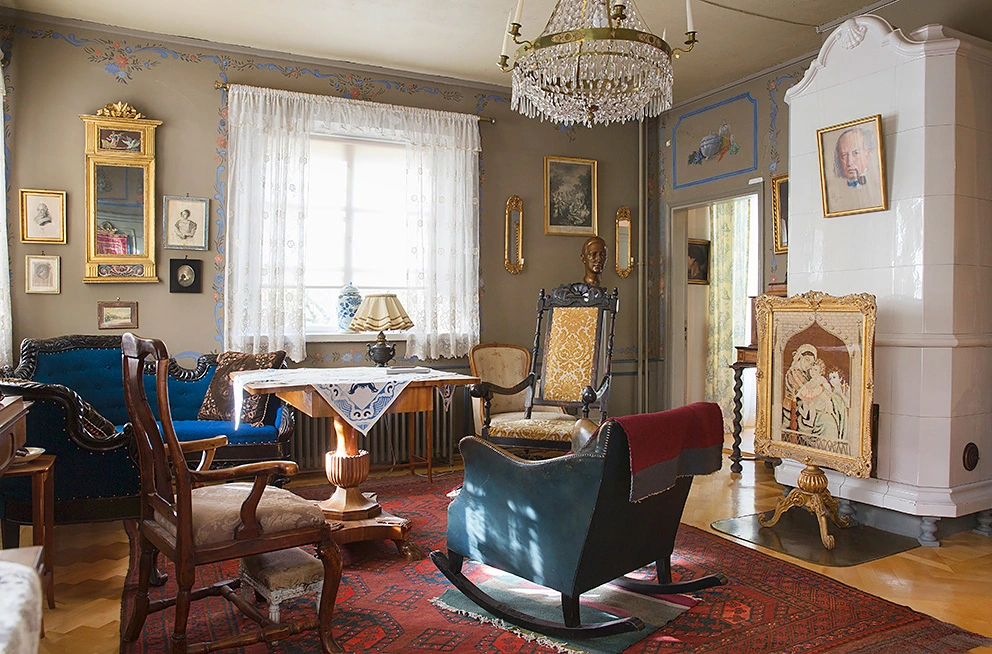
The Drawing Room


The Drawing Room
On the ground floor, the drawing room and dining room were where guests were received and parties were held. The rooms on the first floor belonged to the couple’s private sphere –the bedroom, the library and Axel’s studio.
The Haartmans had a lively social life, and Axel’s post as Director of Turku Art Museum included a certain amount of entertaining, some of which took place in his home. Guests received by the couple included Norwegian winner of the Nobel Prize for Literature Sigrid Undset and Finnish artist and sculptor Wäinö Aaltonen. Family was very important to both Axel and Hedvig, and they often received visits from their relatives. Hedvig’s brother Thorfinn, who was a doctor, and her sister Alfhild, a teacher, both lived in Naantali.
Axel decorated the walls of the drawing room with a floral pattern borrowed from an eighteenth-century fan. He also intended ceiling paintings depicting different properties and places that were important to him and Hedvig. These included Saustila Manor in Sauvo, where Axel lived as a child, the family’s summer home Rönnudd in Kimito and Toivola in Ruovesi, where Hedvig’s parents lived. Haartman had fabric painted with lime mounted on the ceiling, but for some reason, it remained undecorated.
Above the doors, Axel painted pictures hinting at where the doors led. Above the door to the dining room, there is a still-life painting of a soup bowl and grapes. Above the door in the inner corner of the room, which leads to the garden via the terrace, he painted flowers and gardening tools.
The furniture in the room represents different periods. The chest of drawers on the right of the entrance from the hall is Gustavian, dating from the late eighteenth century. It belonged to Axel’s great grandmother’s father, Gustaf Mauritz Armfelt (1757–1814). The rocking chair, however, is one of the most modern pieces of furniture in the room, and was a gift from Axel to Hedvig on her sixtieth birthday in 1934. It was purchased in Helsinki. The chandelier is Empire style, dating from the early nineteenth century and was inherited by Axel from one of his many uncles on his mother’s side, Rabbe Wrede (1853–1927).
